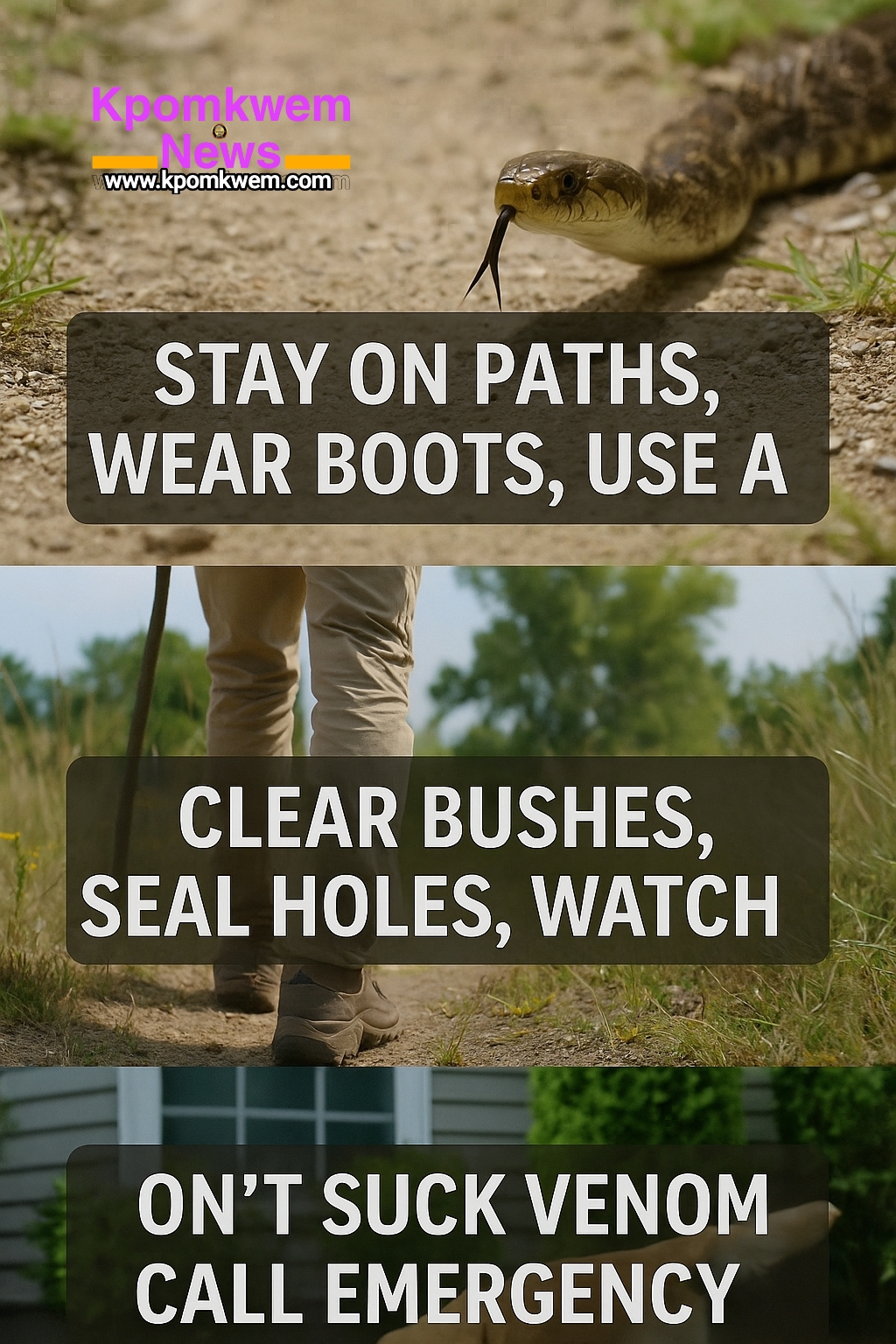Snake safety tips
By Samuel Isaiah, Lagos. A Seasoned Journalist and Pressman, Digital Media Expert /Telecom Engineer and a renowned Gospel Artist, Public Speaker/MC. Blending Professional careers into writing and entertainment.

Snake Safety Tips
Whether you’re a hiker, farmer, parent, or simply someone who lives in a snake-prone region, understanding snake safety tips can save lives. Snakes play an important role in the ecosystem, but human-snake encounters can be dangerous if not handled with care and knowledge. In this detailed guide, we’ll provide you with snake safety advice with reference links to reputable sources.
Why Snake Safety Is Important
Snakes are found in nearly every part of the world, and although most are non-venomous, a bite from a venomous species can be fatal if not treated promptly. According to the World Health Organization (WHO), snakebites kill between 81,000 and 138,000 people annually, especially in rural areas (WHO snakebite data). This makes it essential to educate the public about snake safety tips.
Identifying Common Venomous Snakes
Learning to identify common venomous snakes in your region is the first step in staying safe. Characteristics to look out for include:
Color and Pattern
Some snakes have distinctive markings. For instance, the African Puff Adder has a chevron pattern, while the Coral Snake features red, yellow, and black bands.
Head Shape
Most venomous snakes have a triangular or diamond-shaped head, although this is not a guaranteed indicator.
Behavior
Venomous snakes are often more aggressive when threatened. Observing from a distance is key.
For detailed visuals and regional snake identification guides, visit National Geographic’s snake guide.
Snake Safety Tips for Outdoor Activities
When engaging in outdoor activities such as hiking, camping, or farming, these snake safety tips can help protect you:
Wear Protective Clothing
Always wear long boots and thick trousers when walking in grassy or wooded areas.
Stay on Clear Paths
Stick to well-trodden paths and avoid walking through tall grasses or dense vegetation.
Use a Walking Stick
Tap the ground in front of you with a stick. The vibrations can alert snakes and give them time to move away.
Avoid Lifting Rocks or Logs
Snakes often rest under cool rocks or fallen trees. Use caution and proper tools if you must move them.
Snake Safety Tips at Home
Snakes may enter homes or gardens in search of food or shelter. Here are essential snake safety tips for residential areas:
Keep Your Surroundings Clean
Clear out garbage, trim tall grasses, and remove debris or woodpiles that may attract rodents — a snake’s main food source.
Seal Entry Points
Close holes and cracks in doors, windows, and walls to prevent snakes from entering your home.
Use Snake Repellents
Natural snake repellents like sulfur, clove oil, or commercial snake repellent granules can be effective barriers.
Pet Safety
Monitor pets when they are outdoors. Curious animals are often the first to encounter a snake.
First Aid for Snake Bites
Despite precautions, snakebites can occur. Here’s what to do:
Do Not Panic
Keep calm and move away from the snake. Sudden movements can spread venom faster.
Immobilize the Affected Limb
Keep the bitten limb at or below heart level. Use a splint to minimize movement.
Do Not Suck the Venom
Contrary to popular belief, sucking out venom does more harm than good. Avoid cutting the wound as well.
Seek Medical Help Immediately
Call emergency services or go to the nearest hospital. If possible, take a picture of the snake for identification.
For professional medical guidance on snakebite treatment, check the CDC’s snakebite resource.
Teaching Kids About Snake Safety
Children are naturally curious and may unknowingly provoke a snake. Teach them these vital snake safety tips:
- Never touch or try to catch a snake.
- Inform an adult immediately if a snake is spotted.
- Avoid playing in long grass or under bushes.
- Learn basic first aid and emergency numbers.
What to Do If You Spot a Snake
If you see a snake:
- Do not approach it.
- Give it space. Most snakes will flee when not cornered.
- Call local wildlife services to remove the snake safely.
In Nigeria, for instance, you can reach out to organizations like the Nigerian Conservation Foundation (NCF) for assistance.
Summary of Key Snake Safety Tips
- Be aware of your surroundings in snake-prone areas.
- Use protective gear outdoors.
- Keep your home and garden clean.
- Educate children on snake safety.
- Always seek medical attention after a bite.
Final Thoughts
Understanding and applying these snake safety tips can significantly reduce the risk of snake encounters and bites. Whether you live in a rural community or love the outdoors, awareness and preparedness are your best defenses. Remember, snakes are not enemies — they are part of nature’s balance — but safety always comes first.
Stay safe, stay alert, and share this article to educate others about essential snake safety tips.

For more wildlife safety guides, visit kpomkwem.com..






















